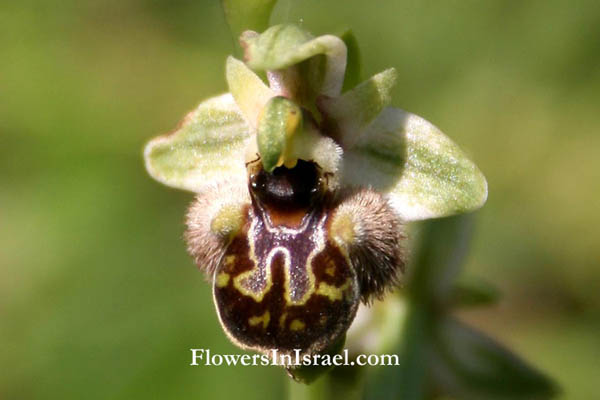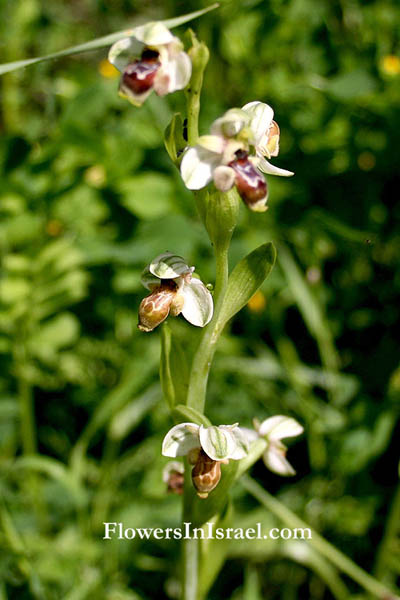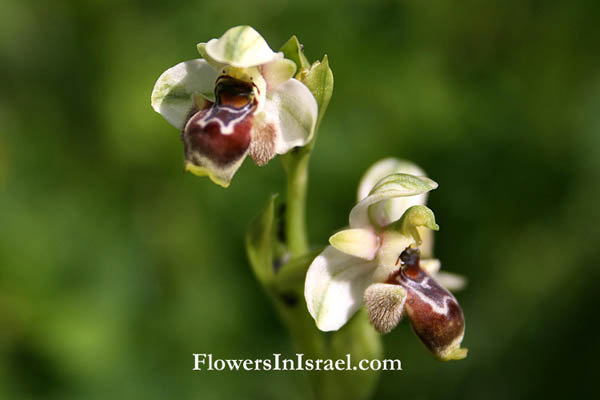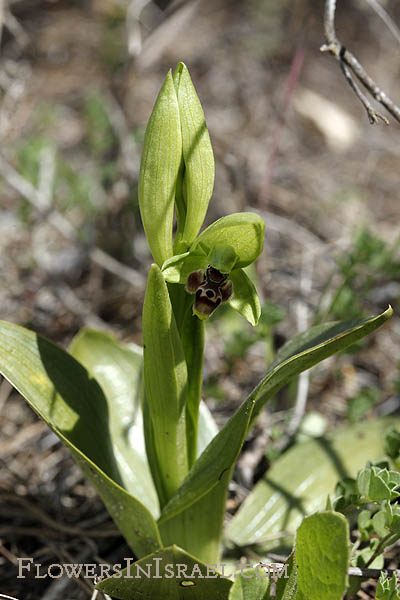Carmel Bee-Orchid, Mountain Carmel Ophrys,
Hebrew: דבורנית דינסמור, Arabic: اوركيد النحله
| Scientific name: | Ophrys umbilicata Desf. 1807 | |
| Synonym name: | Ophrys carmeli H. Fleischmann & Bornmüller, Ophrys dinsmorei Schlechter | |
| Common name: | Carmel Bee-Orchid, Mountain Carmel Ophrys | |
| Hebrew name: | דבורנית דינסמור | |
| Arabic name: | اوركيد النحله | |
| Plant Family: | Orchidaceae, סחלביים |

|
| Life form: | Geophyte | |
| Stems: | 15-40 cm tall | |
| Leaves: | Alternate, rosette, entire | |
| Flowers: | Greenish yellow; sepals 6-13 mm long, lanceolate, greenish or pale pink; petals 3-5 mm long, triangular, pale green, hairy; labellum 6-15 m long, 3-lobed; lateral lobe with horn-like projections, velvety, dark red-purple; middle lobe convex, oblong, with fan-shaped tip; speculum pale blue, reddish-brown or brownish-violet with yellowish borders, irregular, almost encircling, 3-4 velvety spots | |
| Fruits / pods: | Capsules, split open by longitudinal slits; seeds numerous, minute; endosperm absent | |
| Flowering Period: | January, February, March, April | |
| Habitat: | Batha, Phrygana | |
| Distribution: | Mediterranean Woodlands and Shrublands, Semi-steppe shrublands, Shrub-steppes, Montane vegetation of Mt. Hermon | |
| Chorotype: | Med - Irano-Turanian | |
| Summer shedding: | Ephemeral |

Derivation of the botanical name: Ophrys, oQ^us, "the eye-brow", referring to the furry edges of the lips of several species. The latin name for this group of terrestrial orchids. The Hebrew name דבורנית, dvoranit, from דבורה, dvora, a bee; the flowers bear a striking resemblance to a female bee. When male bees are tricked into mating with them, they get covered in pollen and spread it from flower to flower.


Location: Road 395, Martyrs Forest |